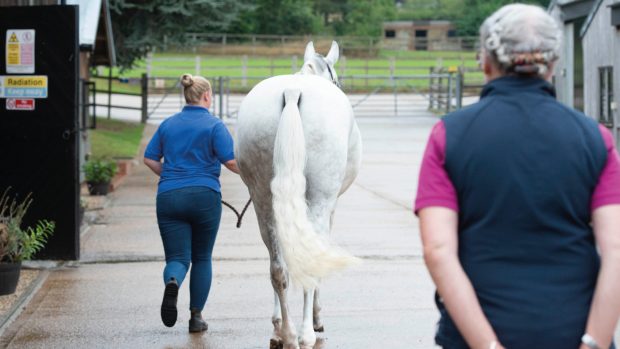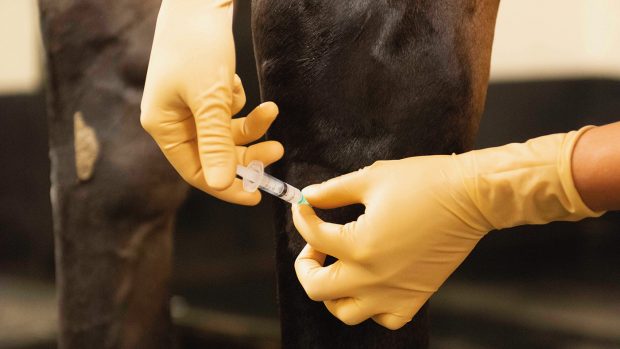Injury to the meniscus is one of the most common causes of stifle lameness and during the past 10 to 15 years there has been a growing appreciation of its significance as a cause of lameness in horses.
What is the meniscus?
The menisci are two semicircular horseshoe-shaped structures which lie within the stifle joints, between the tibia and femur (thigh bone), and together act as a cushion and stabiliser of the joint.
How common is the problem?
One of the reasons for meniscal and stifle injuries becoming more frequent is because in the past they have been difficult to diagnose. Only recently, with advances in orthopaedic diagnosis, has it become possible to identify such injuries with any confidence.
What are the signs?
Meniscal injuries often present themselves as a sudden onset severe lameness following trauma, although some horses may have a more subtle long-term lameness. In some cases there may be a degenerative disease taking hold rather than a one-off traumatic injury.
In addition to lameness, most horses will have some detectable swelling of the stifle joint, although this is frequently subtle.
Is it easily diagnosed?
Nerve blocks will nearly always have to be carried out to identify the stifle as the source of pain as X-rays are usually unrevealing in the early stages of lameness.
Ultrasound of the stifle joints can be very useful in defining meniscal injuries, although this is a specialised technique and not all vets will offer it routinely.
Definitive diagnosis of meniscal injuries usually requires arthroscopic (keyhole) surgery examination of the stifle joint. This technique is usually very accurate in defining the disease, however it is expensive and invasive, requiring a general anaesthetic.
While arthroscopic examination of the stifle joint can be very helpful, in some cases it does not always reveal the whole picture, as the anatomy of the horse’s stifle, unlike that of a human, means that the surgeon cannot accurately assess the whole meniscus.
What’s the prognosis?
About 50% of horses with meniscal injuries will return to a similar level of work as they were performing prior to injury. The outcome is dependant on how severe the initial injury is, which can usually be determined by arthroscopic surgery.
Furthermore, the prognosis is often dependant on how much the injury results in onset of osteoarthritis, which may be the reason why some horses do not make a full recovery.
If surgery is performed, treatment will consist of cutting away damaged meniscus.
Otherwise, rest and controlled exercise, in combination with drugs, will most likely be advised.
For this article in full, see the current issue of Horse & Hound (15 January, ’09)



